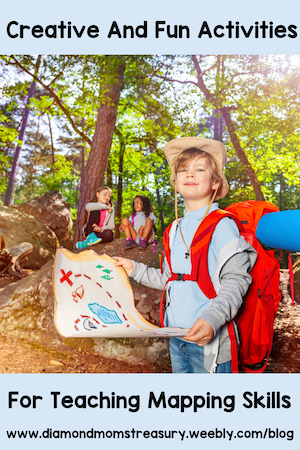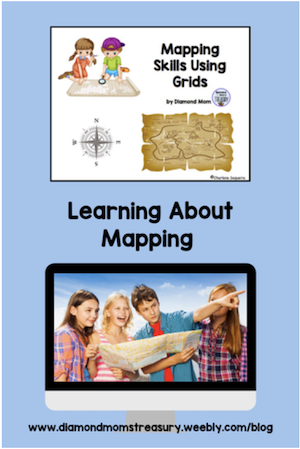|
Are you looking for innovative ways to introduce mapping skills to your young students? Mapping skills are an important tool for students to have as they navigate their way through the world. It's important to nurture these fundamental skills early on. Here are some creative ideas to make learning about maps engaging and fun in your classroom. Map PuzzlesPuzzles are a great tool for learning about geography and how to read maps. They can be used to study areas where kids live or other parts of the world. Starting with smaller areas and expanding to the world view follows a similar pattern to teaching about families, neighborhoods, cities, provinces, territories, or states, and then full countries when learning about communities. Map ArtworkEncourage artistic expression by having students create their own maps, whether it's their neighborhood, a fantasy land, or a treasure map. You could even create a map gallery or bulletin board with their maps. It might be fun to have them create some stories to go along with their maps. Map StoriesMap stories can be incorporated in a variety of ways to make mapping more meaningful. Here are a few ideas. 1. Create some stories that involve using a map or discovering a place by following directions. These can be based on actual events or fantasies. 2. Integrate storytelling with mapping. Read colorful storybooks that involve journeys and create simple story maps together. Ask your students to draw the story's path on their own maps. 3. Read books and stories that focus on communities and their development. Discuss the roles of different community members, the services they provide, and the ways in which they contribute to the well-being of the community. Encourage children to share their own stories or experiences related to their community. 4. Have students create maps of their favorite storybooks. This activity not only reinforces map skills but also connects literature and geography. Treasure HuntsAs soon as you mention a treasure hunt, some children are hooked. They are curious to find out about hidden treasure and to go on the hunt. This is a great time to incorporate mapping skills and adventure. Organize classroom treasure hunts where students use maps to locate hidden "treasures" within the school. This activity combines problem-solving with map reading. Create a treasure hunt activity outdoors where children follow a map to find hidden objects or clues. Provide a simple map with landmarks and directional instructions, and let them navigate their way to the treasure. This activity promotes map reading, following directions, and spatial awareness. Map Symbols And LegendsSome important mapping skills for young children to learn include being able to interpret symbols and legends as well as use scale and a compass rose. Activities should be created to help with developing these skills. Here are some suggestions: 1. Provide them with simple maps and legends and practice reading them together. They should learn to recognize and locate landmarks, such as buildings, parks, or bodies of water, on maps. This helps them build a mental map of their environment and develop a sense of place. They can also practice creating simple maps of their classroom, neighborhood, or a familiar route using symbols and adding in a legend. 2. Understanding the concept of scale on maps, where distances are represented proportionally is another important skill for them to learn. They need to learn to estimate distances and understand that maps are a condensed representation of a larger area. Doing activities that help them to visualize how scale works helps. For example: if they want to walk down to the corner, it is very different from walking several blocks to the store. They need to understand that on a map you can't really draw the distances as they really are and that small distances need to be very close together and longer distances need to be much further apart on the map to represent the distances in real life. Try using a tiled floor to show how this could work. The distance of one tile could be one block. If something was down at the corner, it could be one tile away. If something was 6 blocks away, it could be 6 tiles away. This could then be transferred to graph paper so that each square represents a block. Using graph paper instead of tiles helps them to see that to represent larger distances the scale needs to be smaller. 3. Following directions can be difficult at first. Learning about the compass rose and cardinal directions (north, south, east, west) and basic navigational concepts like left, right, up, and down is an important skill. Do plenty of games and activities to practice giving and following directions using maps or verbal instructions. For example, you can play "Simon Says" using directional cues like "Simon says take two steps forward" or "Simon says turn to the left." This activity reinforces cardinal directions and helps them practice spatial orientation. Map Reading Challenges: Provide children with different maps and ask them to locate specific landmarks, calculate distances, or plan routes between two points. You can also create map-based riddles or puzzles for them to solve. This activity enhances their map-reading skills, critical thinking, and problem-solving abilities. Community MapsThere are many different ways to create community maps and each of them can serve different purposes. Here are a few suggestions and how they can be used to enhance student learning. 1. Encourage students to create community maps that depict different features, landmarks, and institutions in their local area. They can identify and label places like schools, hospitals, parks, and grocery stores. Discuss the purpose of these places, their roles within the community, and how they contribute to the well-being of residents. 2. Have them create maps of different communities that include landmarks, places of interest, and community resources. Encourage them to label different locations and discuss their importance. Compare and contrast the maps to highlight the diversity and uniqueness of each community. 3. Collaboratively create a map of your school's surroundings or neighborhood. Include landmarks, parks, and other points of interest. 4. Collaborate with other classrooms or community members to create a community map. Each group can be responsible for mapping a specific area or theme. Children can work together to gather information, create maps, and present their findings to the community. This project fosters teamwork, research skills, and a sense of community engagement. These are only a few of the different ways that teaching mapping skills can be engaging and fun for kids. For some resources that may help, check out my social studies category on TPT. Next time we will look at using technology with mapping skills to enhance the learning and take it further away from home. Related PostsComments are closed.
|
About Me Charlene Sequeira
I am a wife, mother of 4, grandmother of 9, and a retired primary and music teacher. I love working with kids and continue to volunteer at school and teach ukulele. Categories
All
|















 RSS Feed
RSS Feed